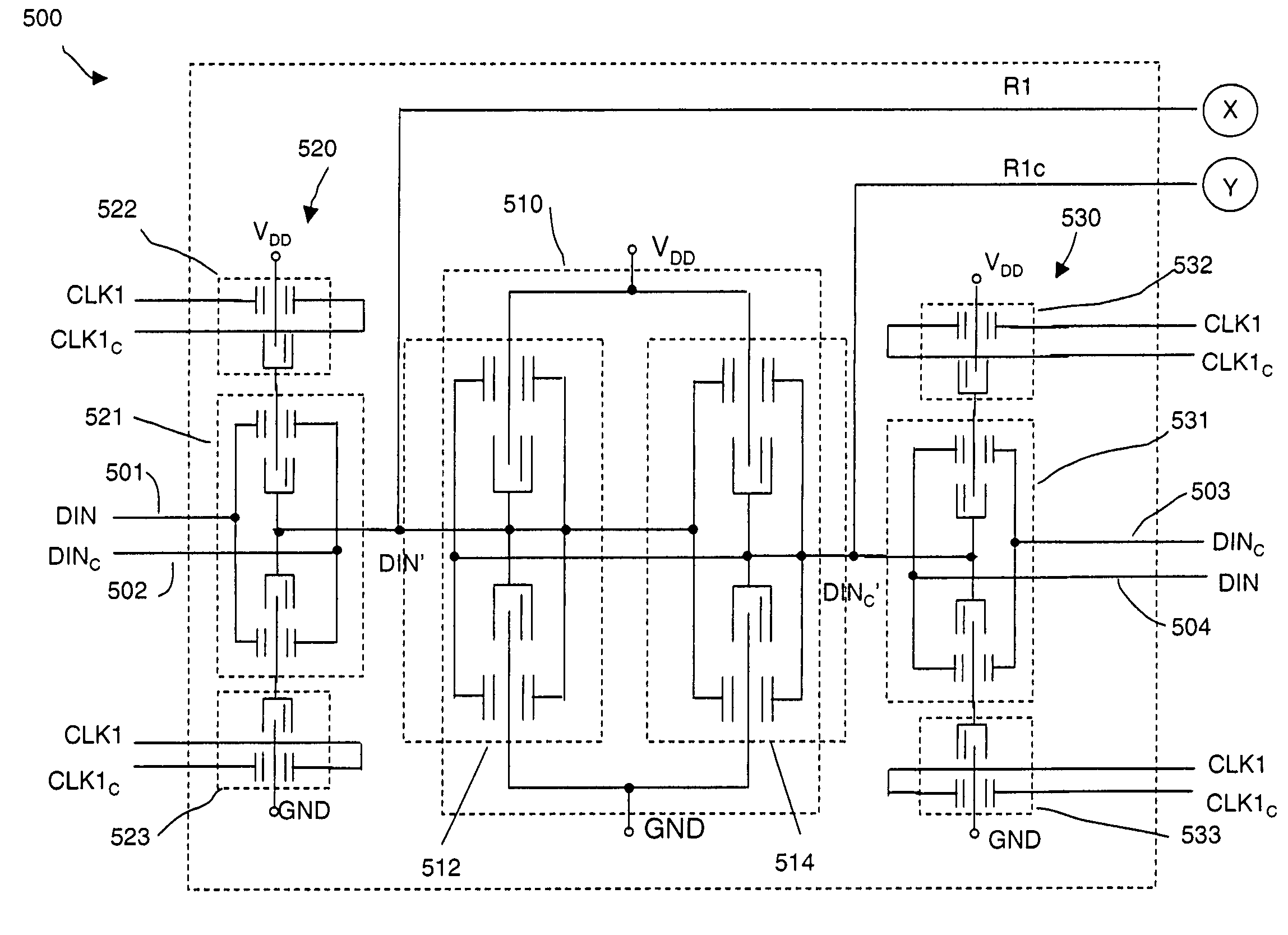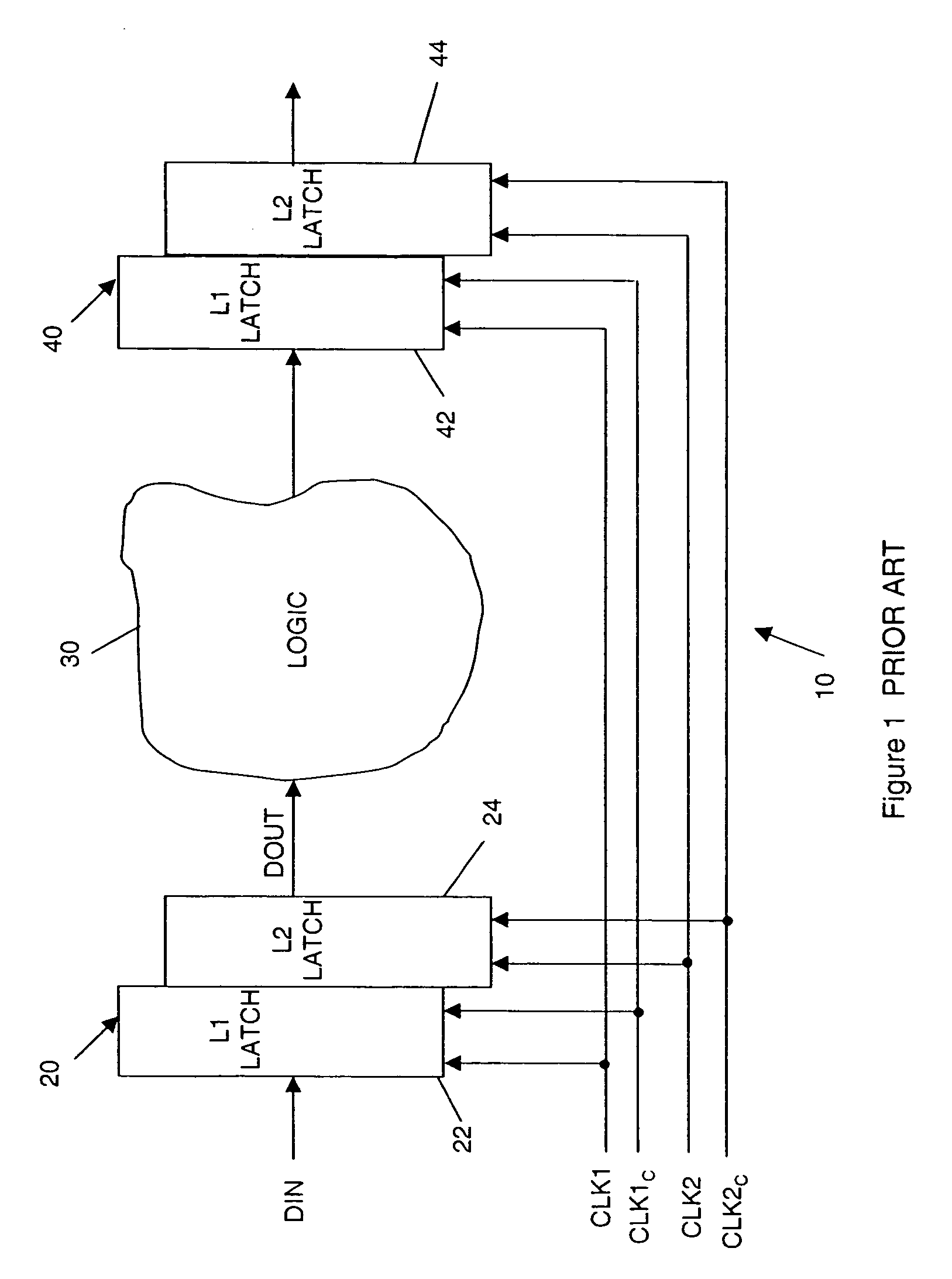Storage elements using nanotube switching elements
a switching element and nanotube technology, applied in digital storage, pulse technique, instruments, etc., can solve the problems of high power consumption, density and operation speed of mos digital circuits, and limited density of bipolar digital integrated circuits
- Summary
- Abstract
- Description
- Claims
- Application Information
AI Technical Summary
Benefits of technology
Problems solved by technology
Method used
Image
Examples
embodiment 600
[0098]FIG. 6 is a schematic representation of a gated latch 600 that provides an alternate embodiment for master latch 500. In gated latch 600, a volatile three-terminal single-rail input nanotube-based transfer device 620, 630 is used in place of each tri-state inverter 520, 530 in master latch 500. In the illustrated embodiment, each volatile three-terminal single-rail input device 620 and 630 is constructed from a four-terminal nanotube switching element wherein the release electrode is connected to the signal electrode. Each volatile three-terminal single-rail input nanotube-based transfer device 620 and 630 has an input, Din and DinC, respectively, and an output to storage element 510. The transfer of the input from the signal electrode of each transfer device to the output electrode is controlled by CLK1. When CLK1 is high, transfer device 620 transfers the signal Din. The conductive channel is created by the deflection of the nanotube channel element when there is a sufficien...
embodiment 800
[0100]FIG. 8 is a schematic representation of a volatile single-rail tristate inverter 800 that can be used to replace each of non-volatile tristate inverters 520 and 530 in master latch 500. The four-terminal non-volatile nanotube switching elements of tristate inverters 520 and 530 are replaced with three-terminal volatile nanotube switching elements in volatile single-rail tristate inverter 800. In the illustrated embodiment 800, each volatile three-terminal single-rail input device is constructed from a four-terminal nanotube switching element wherein the release electrode is connected to the signal electrode.
[0101]FIGS. 9A and 9B illustrate a master-slave latch constructed in accordance with another aspect of the invention. Master latch 900 and slave latch 950 incorporate latches 910 and 960 formed of non-volatile nanotube-based inverters that are not cross-coupled. Cross-coupling is not necessary because the non-volatile elements are able to store a data bit, unlike a volatile...
PUM
 Login to View More
Login to View More Abstract
Description
Claims
Application Information
 Login to View More
Login to View More - R&D
- Intellectual Property
- Life Sciences
- Materials
- Tech Scout
- Unparalleled Data Quality
- Higher Quality Content
- 60% Fewer Hallucinations
Browse by: Latest US Patents, China's latest patents, Technical Efficacy Thesaurus, Application Domain, Technology Topic, Popular Technical Reports.
© 2025 PatSnap. All rights reserved.Legal|Privacy policy|Modern Slavery Act Transparency Statement|Sitemap|About US| Contact US: help@patsnap.com



